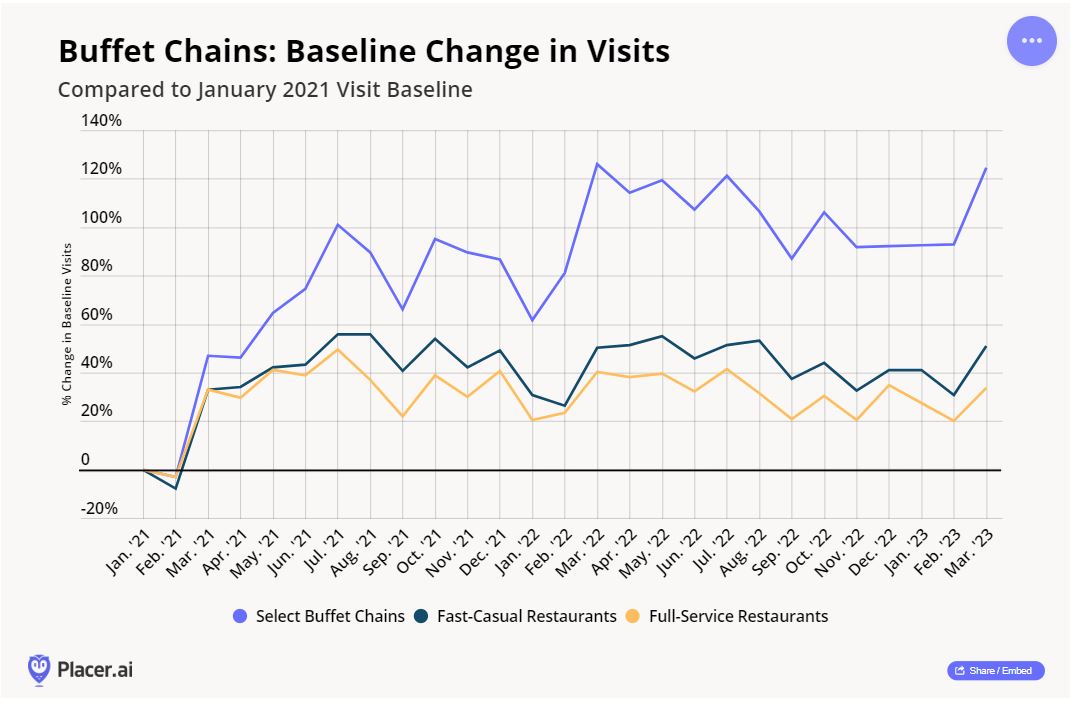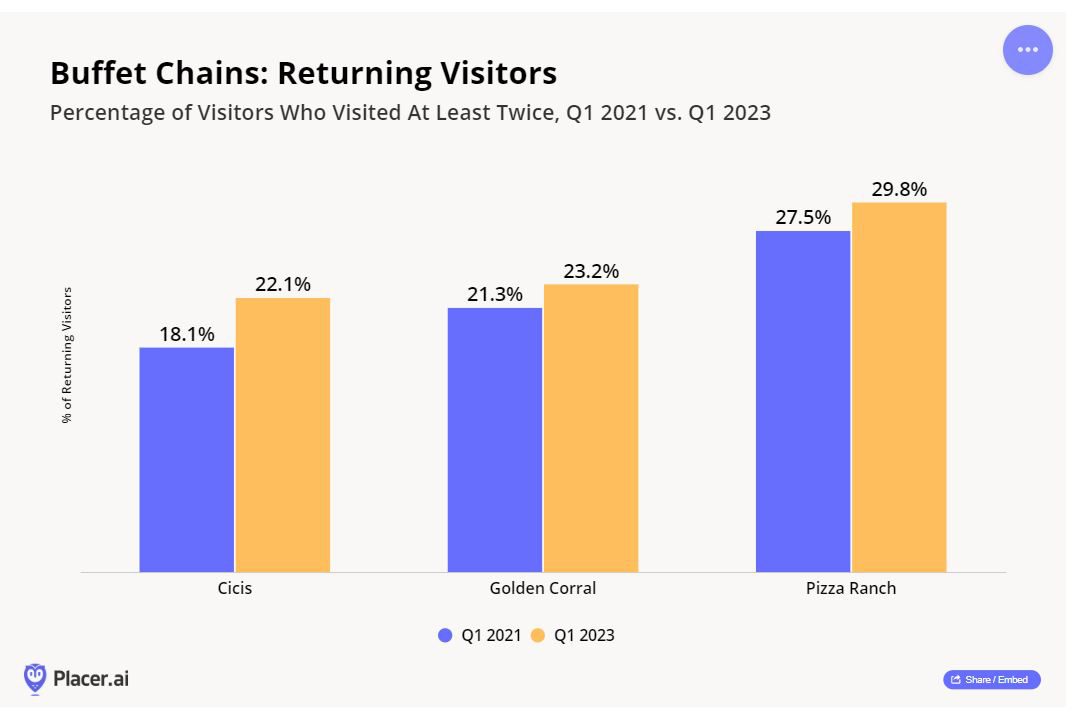The following report is from Ezra Carmel of Placer.ai, May 3, 2023
For some time, traffic to the dining industry has been impacted by inflationary pressures on consumer spending. Various restaurant categories have seen a decline in visits, and yet, some chains – and formats like “eatertainment” – are weathering the storm.
Buffet restaurants – with their combination of value and variety – have shown to be another successful venture in dining. We dove into the location analytics for the restaurant space and three of the largest buffet chains – Cicis, Golden Corral, and Pizza Ranch – to take a closer look at the trends driving visits to buffets.
In Line for Visits
In 2021, pandemic restrictions gave way to strong visitation trends in multiple restaurant categories, with buffets experiencing some of the most dramatic increases in visits. After months of being stuck inside, consumers likely found eating at home was getting somewhat repetitive and excitedly returned to buffets and the seemingly endless variety they offer.
Since January 2021, buffets outperformed their comparable restaurant peers in terms of baseline visit growth. And though both Fast-Casual and Full-Service chains – like Chipotle and The Cheesecake Factory, respectively – have also found relative success, buffets experienced larger visit growth than both dining categories.
Notably, in 2022 when inflation began to dominate headlines, buffets’ baseline visit growth started to soar. Likely, diners choosing to eat out became increasingly concerned with getting value for money and buffets became a popular choice.

Self-Serving Value
At a time when many consumers are cutting back on discretionary spending, buffets have continued to drive visits by maintaining their value perception. Trade Area Analysis of three major buffet chains – Golden Corral, Cicis, and Pizza Ranch – using the Census 2019: (5-year ACS) dataset revealed that in 2022 all three chains had trade areas with a median household income (HHI) below the national benchmark. And all three chains also had trade areas with a percentage of non-family households that was higher than the national benchmark.
For diners, an all-you-care-to-eat buffet at a fixed price seems like a good way to fill up without being surprised by the bill. This could be why many lower-income consumers have recently been flocking to buffet chains.
But for visitors with children in tow, buffets may not be such an attractive value proposition – even with kids pricing. These visitors might not expect young diners to be hungry enough to make an all-you-care-to-eat buffet worthwhile, which could explain why visitors from non-family households are making up a relatively large percentage of buffet visitors. It would appear that lower-income visitors who aren’t paying for a crowd, are most drawn to a buffet meal.
Second Helpings
Whether it’s because buffets provide many choices to keep eating out fresh – or because they offer bang-for-a-buck – visitors are now frequenting buffet chains more often.
In Q1 2023, all three chains analyzed grew their percentage of repeat visitors compared to Q1 2021. Pizza Ranch had the highest percentage of repeat visitors of the bunch, which could be connected to having a trade area population with both a relatively high median HHI and percentage of non-family households. Pizza Ranch visitors from non-family households might find the most value in a buffet and have a somewhat larger budget to do so more frequently.

Plate-Up
Since consumers emerged from pandemic restrictions and returned to their favorite restaurant chains, buffets have been piling on visits. It seems that value and variety are driving the recent buffet boom which has seen a surge in both repeat visits and visits overall. As inflationary woes continue, buffets are in position to continue to drive traffic from throngs of hungry diners.
For more restaurant updates and location intelligence insights, visit Placer.ai.



